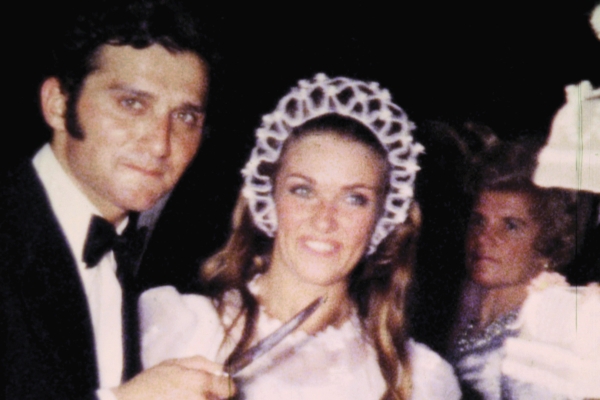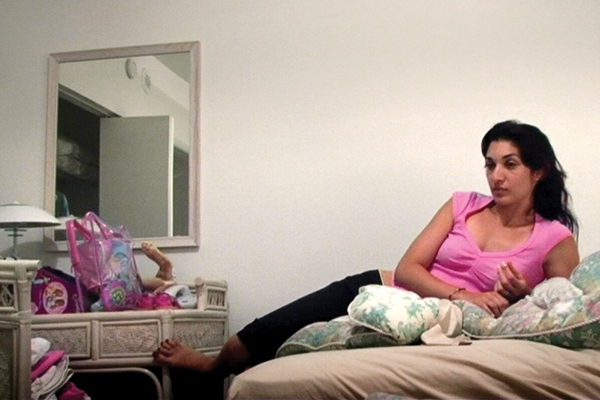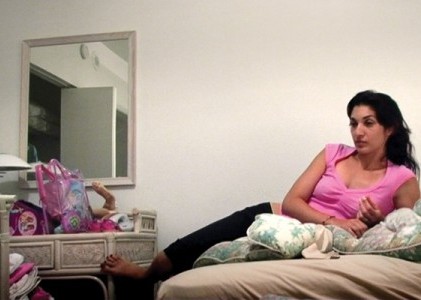Family Viewing
To start the New Year, the Museum introduces First Look, a new annual showcase curated by Dennis Lim, Rachael Rakes, and David Schwartz. This two-weekend program—which brings together some of the most invigorating and inventive voices in contemporary world cinema, including established and emerging filmmakers—affirms our belief in cinema as a flourishing art form. To supplement the program, Moving Image Source is running a series of essays on all the feature films that are being shown. Check back daily from now through next weekend for new articles.
The unsung genre of recording family milestones—weddings, birthdays, bar mitzvahs, etc.—stands outside the traditional realms of filmmaking and film criticism. Habitually shot from a neutral perspective, such home movies aim to provide an accurate, truthful representation of ceremonies, traditions, and rituals, as they exist for the record, to be looked back upon when memory may have faded, as a remembrance of a time when families put aside all differences for the sake of celebration. The invisible filmmaker should let what's in front of the camera, not who's behind it, drive the narrative. (The same holds true for TV procedurals, the foremost example being Law and Order, and three-camera sitcoms, but that's for another time.) Yet the main goal of this recording is to capture emotion. This invisibility on the part of the family "filmmaker" (or perhaps "documenter") is not an easy skill to master, and even the most auteur-driven of these home movies is frequently consigned to gather dust in the back of the closet.

Papirosen
Over the past decade, Gastón Solnicki became one of these invisible filmmakers, but, shall we say, went a bit over the top with it. He shot over 180 hours of footage of his immediate family, beginning with the birth of his nephew Mateo, continuing on family vacations and holiday gatherings, and eventually conducting interviews with his grandmother, Pola, that links the footage together through voiceover. Part of the home-movie genre but superseding it, Papirosen exposes the ghosts haunting the four generations of the Solnicki clan every day; the director sculpted away at the footage to assemble, through slices of life, a universal portrait of family highly charged with symbolic meaning, where family landmarks and milestones stand alongside the more familiar interactions of sniping, arguing, and, for some reason, Solnicki's father, Victor, the main protagonist, appearing shirtless. Solnicki's film is an act of leveling, placing events of "consequence" on par with the commonplace; this dialectical construction both elevates the familiar, and puts special events in grander context. (A Passover seder scene, in particular, accomplishes both tasks simultaneously.) Even though his subjects periodically break the fourth wall, Solnicki is foremost an observer, not a shaper of the events he films. (An exception: a notable scene in that seder, where Solnicki asked his father to reenact what might be the most important moment in the family's history.)
An intimate exposé that acknowledges the discomfort implicit in the voyeuristic gaze, Papirosen also dips its toes into the grand thematics of the last century. It illustrates the difficulties of escaping the trappings of history—in particular, the oppressive legacy of the Holocaust for its survivors (like Victor) and their relatives. Solnicki's camera is performing the same task as the photographers of the older 8mm footage he has seamlessly integrated from his family archive, marking Papirosen as an eloquent testimony on family and history; Solnicki places himself as the intellectual inheritor of a line of chroniclers, writing the latest chapter in a very old story.
At the same time, then, Solnicki's film is an observational document (of a Jewish family, their conflicts, arguments, and crises), a critique (of class, in particular, the Jewish nouveau riche of post-WWII Argentina), and ultimately a celebration (of love and hate, family bonds, and the particular Jewish variant of the need to bear witness). As Robert Koehler has written in Variety, a viewpoint I suspect will be all-too-common, all that I've just detailed comes together to create "an impressive contribution to Jewish cinema . . . the pic should be at the top of the get list for smart docu and Jewish-themed events." I surely can't imagine any Jewish film festival passing on this one, but to consign the work to the Jewish ghetto would be to undervalue the quality of the documentary filmmaking at play. And by filmmaking, I mostly mean editing. Did I mention the film is only 73 minutes long?
It is with the film's found-footage ending, counterintuitively, that the filmmaker makes himself the most apparent in terms of structuring and effecting the grand emotional scheme of the work. Throughout, we have been given examples of older, silent family filmmaking/documenting: interspersed with scenes of the sort for which Gastón's mother has forbidden him to show the film in their native Argentina is older home-movie footage. We can assume the authors are members of Solnicki's family. They shoot (on film) from the perspective of happiness and relief of arriving in Argentina, a new life ahead, escaping the horrors of WWII. By and large, they seem to project happiness, but as we learn from Solnicki's narrative, such happiness is often a shell to cover more serious issues, like the suicide of his father's father, and the legacy of the Holocaust.

Papirosen
The last use of archival footage in the film is an absolute killer, and may even be an example of pure cinema. The person behind the camera is unknown to us (and to Solnicki)—it's a job for hire, and comprises no direct point of view, though it seems to be an attempt at some kind of merging between the bar mitzvah and music-video genres. It's the mid-'80s. The cameraman is standing on a stage, in the midst of the bar mitzvah band and singers, shooting the mass movements of the early-teenage line-dancing celebrants, who are being led in the steps to this Israeli dance by full-body disco-suit-wearing hired professionals, part of the same onstage crew. The music and the long take of movement are infectious, even if we're aware that essentially we're being presented ecstatic propaganda. (The scene is intercut with the film's closing credits, names that represent a second family to Solnicki.)
On its own, this dance is gangbusters, and fine enough—all good films have dance numbers. But in the context of the full film, and the particular scene that precedes it, the bar mitzvah footage is heightened to the level of cinema. It's an example of the consummate, musical editing by Andrea Kleinman and Solnicki (who thanks Bartók in these closing credits) that we've seen throughout the film: the bar mitzvah is preceded by Victor and his grandson Mateo on the ski lifts, where we found them at the beginning, though now it's revealed that it's Rosh Hashanah, the Jewish New Year, and Victor is singing "Avenu Malkenu" ("Our Father, Our King") to Mateo, as Victor's own father used to sing it. Mateo then asks how Victor's father died, and Victor replies, "From sadness." Solnicki then cuts to what he's said is the bar mitzvah of his brother Alan, whom we see little of in the film because he's decided to opt out of his family duties—though Alan does make an appearance looking pissed off in that momentous Passover seder scene, wherein we're given the story of the eldest Solnicki's death. Every beginning in Papirosen also contains within it an ending, and vice versa.
The bar mitzvah dance number is in fact the only scene of a family gathering in the film that doesn't include some kind of argument, dispute, or passive-aggressive behavior; the Solnickis are in the background, hidden in the middle of the dancers, if not offscreen altogether. Appreciate the happy moments, Solnicki the editor/filmmaker says, making fair use of the abnormally long take from this anonymous videographer for his own purposes, for they might come once every 13 years. ![]()
LATEST ARTICLES
-20140814-173707-thumb3.jpg)
Fighting Words
by Imogen Sara Smith
posted August 12, 2014

Fighting Words, Part 2
by Imogen Sara Smith
posted August 20, 2014

On the Margins: The Fil…
by Andrew Chan
posted August 12, 2014

Robin Williams: A Sense…
by David Schwartz
posted August 12, 2014
 Family Viewing
Family Viewing
KEYWORDS
First Look | Gastón Solnicki | Papirosen | film review | documentary | found-footage | ReligionRELATED ARTICLE
Twilight Zone by Robert KoehlerA Nude by Garrel by Eugenio Renzi
Unplugged by Phil Coldiron
Island Time by R. Emmet Sweeney
Ghost World by Colin Beckett
Darkness Doubled by Leo Goldsmith
Jungle Fever by Andréa Picard
Going the Distance by Scott MacDonald
Glass Houses by Michael Sicinski
Capitalist Punishment by Shelly Kraicer
Her Own Devices by Robert Koehler
The Fallen by Phil Coldiron
The 1 Percent Solution by Michael Sicinski
More: Article Archive
THE AUTHOR
Mark Peranson is the publisher and editor of Cinema Scope.
More articles by Mark PeransonAuthor's Website: Cinema Scope

